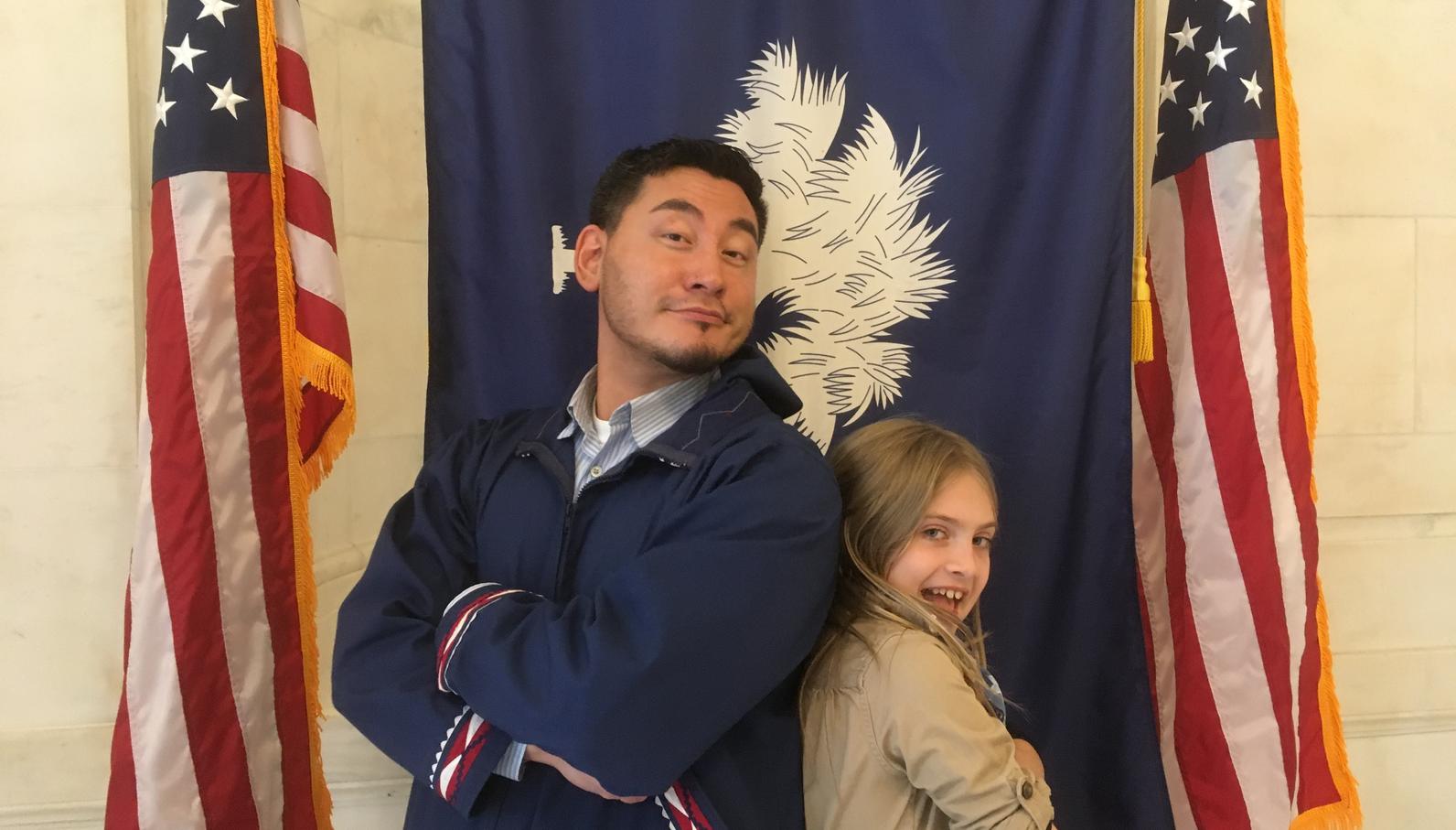With a new administration eager to greenlight drilling for fossil fuels, the coastal plain of the Arctic National Wildlife Refuge is in trouble again — and along with it, 70 species of birds that nest there each summer.
So last month I traveled to Washington, DC for Audubon South Carolina, to learn more about the Refuge with citizen-lobbyists from around the country. The most exciting part of the trip was the opportunity to meet the Native lobbyists from Alaska.
The Gwich’in
Many of the Native Alaskans who oppose drilling in the Refuge are Gwich’in, a tribe whose survival depends on protection for the Refuge’s coastal plain.
About 8,000 Gwich’in live in villages near the Refuge, both in Alaska and Canada. Their homes are remote: getting to Old Crow, Yukon, for example, requires a two-day flight from Vancouver in a tiny plane.
In these villages, caribou are both a staple of the Gwich’in diet and the most vivid symbol of their culture. The Gwich’in harvest just enough to meet their needs, preserving the meat, making boots from the skin, and using just about every other part of the animal.
Each summer, these caribou return to the fecund coastal plain of the Arctic Refuge, where they bear and nurse as many as 40,000 calves. The Gwich’in name for the coastal plain means “The Sacred Place Where Life Begins.”
If you can find a grocery store in a Gwich’in village, two hamburger patties cost $25. So tribal members mean it literally when they say of the caribou: “Their survival is our survival.” This intimate relationship dates back to the tribe’s migration to North America — perhaps as long as 20,000 years.
Touching Us All
There’s also a deeper level to the relationship between the Gwich’in and the caribou. In DC, the Native lobbyists tried to explain it to the rest of us. “Caribou are our identity,” one older woman began, scanning our eyes for a flicker of recognition. “They are who we are.”
“Caribou is in our DNA,” added a young man. “Watching my year-old son chew dried meat, that's when I first fully appreciated the significance.”
Then a young woman described Native friends in a distant city whose only connection with caribou is a 40-year-old memory of meeting a man who’d once seen a great, antlered bull. “It breaks my heart,” she said, tearing up, “to think what people in my village would be like without this animal.”
You don’t need to walk in someone’s caribou-skin boots, literally, to understand them. As the young woman teared up, many of us did too.
A young Gwich’in leader, Dana Tizya-Tramm, offered an explanation. “What we’re doing here together,” he said, “transcends cultures and governments. The wind blows across all borders, and touches all our faces.”
People of the Sea
Other Native Alaskans near the Refuge also rely heavily on protection of natural resources. A young Inupitat man, Gabe Tegoseak, joined our South Carolina lobbying group.
Gabe’s people live in coastal villages that, in some cases, are more than 10,000 years old. They still hunt whale, seal, walrus, and more using traditional methods.
But climate change is hitting the Arctic fast. Last year Gabe’s family home, which he helped build as a child, tipped into the melting tundra.
And lately his hunting buddies have been rescuing rather than harvesting walrus and polar bears. These big mammals feed through holes in the ice, but so much ice has melted that Inupiat hunters now find them starved and exhausted.
Teamwork
So Gabe and I teamed up to make climate change real to the congressional staff we visited. He told how 2,000 year old ice cellars, where his people once kept whale meat, are filling with water. I told how my decade-old garden near the Beaufort River was recently killed by salt-water floods.
The differences between Alaska and South Carolina vanished as everyone in the room began speaking of our love for our ancestors, our land, our communities and traditions. For a moment, a light dawned in that congressional staffer’s eyes.
Then it occurred to me. Maybe, just maybe, “The Sacred Place Where Life Begins” isn’t just one spot on Earth. Maybe it’s every spot where strangers connect, however briefly, about what really matters.
Longing for Light
Now that I’m home, I follow Gabe on Facebook. He just posted this, from the Oglala Sioux leader Crazy Horse:
"The Native nation shall rise again, and it shall be a blessing for a sick world; a world filled with broken promises, selfishness and separations; a world longing for light again."
Remember, I traveled to DC for Audubon, focused on birds. But the Native lobbyists shifted my perspective. Their stories and their presence illuminated our time together.
Perhaps, vicariously, they'll also shift the perspective of readers here in South Carolina. Please bone up right away on the connection between South Carolina and the Refuge. Then ask our federal officials to take a stand.




